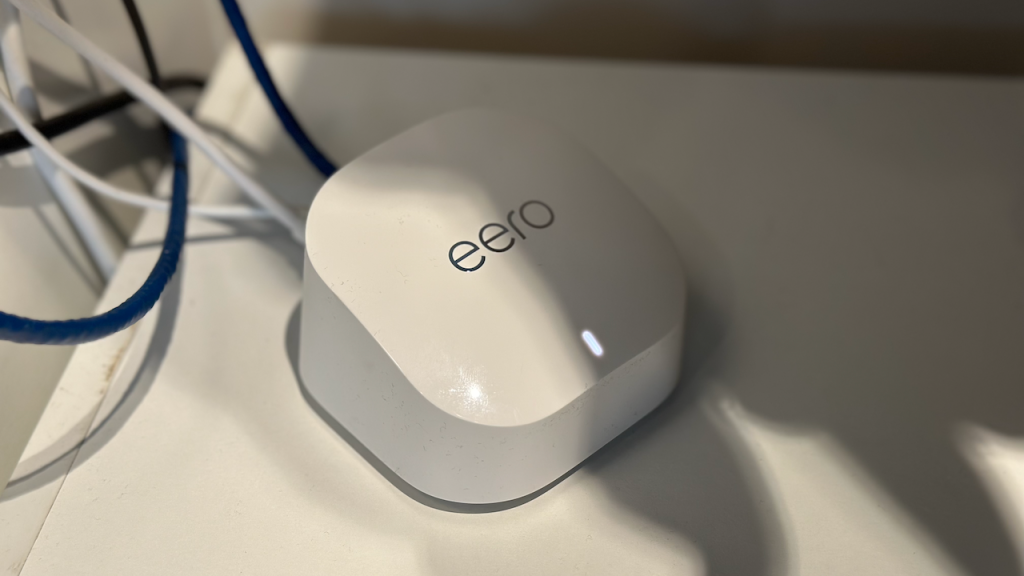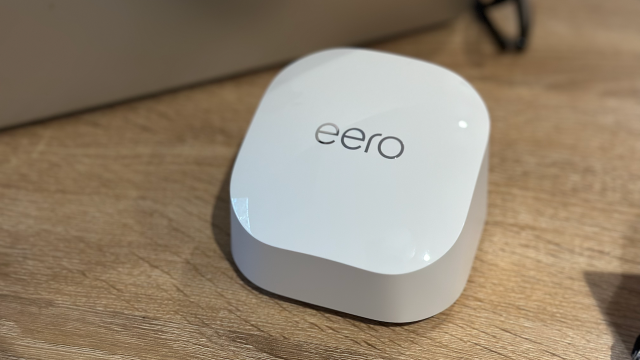Since 2018, I’ve been with Vodafone for NBN. I started on the Essential+ NBN (50Mbps) plan, and, in the suburbs, about 60 kms west of Sydney, I spent the next four years without issue, even as more and more devices were added and my working-from-home days became more frequent. However, moving to a more densely populated apartment in Sydney’s inner west, there was a very obvious problem come 6 pm – one that resulted in the most painful TV streaming experience you could imagine.
This isn’t an issue with Vodafone, as I said, I went the good part of four years very happy with the TPG-owned telco, it was instead the speed tier I was on, the congestion in this block of apartments, and the fact Wi-Fi extenders still can’t pierce walls.
I had every intention of trialling 5G, thinking I could offer some readers with a similar experience some insight into how 5G home internet compared to my mostly unreliable NBN. But MORE reached out to see if I wanted to trial theirs – given they were offering this trial at a higher speed tier than I was on, as well as using a different tech to send the internet through my apartment, I took them up on the offer.
MORE recently partnered with Amazon’s Eero. With their plans, you don’t get a typical router, rather the Eero 6+ mesh router.

Mesh routers are designed to provide your home with a strong, consistent Wi-Fi network. Traditional Wi-Fi routers act as a single access point, so the quality of that connection will lessen the further you are from the router – even with a Wi-Fi extender. If we think about the name itself, ‘mesh’ is how these behave – they create a larger net for the Wi-Fi. With a mesh system, you combine the main router with a series of satellites, with each of these nodes acting as an access point for your Wi-Fi signal. It helps you maintain a more consistent connection throughout your home, as each router can provide a Wi-Fi network that’s running at full capacity. These mesh routers act as a single Wi-Fi network, so once you’ve connected to one of them then you’re connected to all of them.

As you can imagine, I was very excited. The quality was great, but the TV a mere 11 metres from the router (albeit around a corner), was only receiving one bar of signal. And while Amazon Prime Video mostly worked, Netflix buffering more frequently, Foxtel and Kayo were both impossible to watch during footy time (or Gordon Ramsay’s Next Level Chef while I was eating dinner). In the office where the router was, though, the speed test was impressive. It was frustrating to say the least.

With MORE providing one Eero 6+ when it connected by NBN, I remembered Zac reviewing the Eero Pro 6 and using only two of the three devices in his apartment – so instead of splashing the cash on an extra node, I borrowed (stole) his and set it up about six metres away from the NBN box and about the same from the television.

Setting the second device up was a sinch through the Eero app and I then spent my Saturday night catching up on And Just Like That, Riverdale, and Lincoln Lawyer, all without a single buffer.
It’s been about three weeks with MORE NBN and aside from needing to add another mesh router, I’ve, touch wood, not had a single issue. The only thing I regret is making my Wi-Fi password so ridiculously long (and not trying mesh when I had Vodafone NBN to give you insight into that!).
How much does MORE NBN cost?
At Gizmodo, we independently select and write about stuff we love and think you’ll like too. We have affiliate and advertising partnerships, which means we may collect a share of sales or other compensation from the links on this page. BTW – prices are accurate and items in stock at the time of posting.
MORE has six NBN plans, with the cheapest, Value NBN (25Mbps), costing $66 per month and the most expensive, Ultrafast NBN (1000Mbps), costing $144 per month. The plan I’m on, Fast NBN (100Mbps), is $99 per month.
If you’re a Commonwealth Bank customer, however, you get 30 per cent off NBN plans for 12 months, and then after a year, you’ll get 10 per cent off each month.
You’ll need to add the Eero 6+ to your plan, but this is a one-off cost of $159.90 for one, $299.90 for two, or $429.90 for three.
For comparison, via the Eero shop, the Eero 6+ will set you back $249.99 for one, $599.99 for a set of three. The Eero Pro 6 is $349.99 for one, $899.99 for three.
Head over here to check MORE NBN availability.
